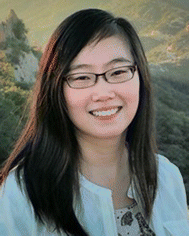Materials Horizons Emerging Investigator Series: Dr Yue (Jessica) Wang, University of California, Merced, USA
Dr Yue (Jessica) Wang received her BS in Chemistry and PhD in Inorganic Chemistry from the University of California, Los Angeles in 2008 and 2014, respectively. Subsequently, she carried out postdoctoral research at Stanford University between 2014–2017. She was a research staff member at Fibron Technologies, Inc. in the years 2008–2009. Dr Wang is currently an Assistant Professor of Materials Science and Engineering and an Affiliated Faculty in Chemistry and Biochemistry at the University of California, Merced. She is the recipient of the NSF-CAREER and Beckman Young Investigator (BYI) awards. Her research focuses on developing bio-inspired materials, mechanically adaptive polymers, and 3D printing of functional materials.
Read Yue (Jessica) Wang's Emerging Investigator Series article ‘Oligoaniline-assisted self-assembly of polyaniline crystals’ ( https://doi.org/10.1039/D2MH01344D ) and read more about her in the interview below:
MH: Your recent Materials Horizons Communication demonstrates that the incorporation of a small amount of tetraaniline can induce crystallization of polyaniline through a single-step self-assembly process and this has application in the conductivity and charge transport mobility of conjugated polymers. How has your research evolved from your first article to this most recent article and where do you see your research going in the future?
YW: We have always been interested in the crystallization of conjugated polymers. We have previously worked on the crystallization of oligomers, which crystallize easily, but lack high conductivity due to their short conjugation length. We got inspired by the crystallization method of inorganic metals and semiconductors, which typically uses a single-crystalline seed crystal to induce long-range ordering. We hypothesized that such concept should be applicable to conjugated polymers if we can identify the appropriate seed crystal. With our previous work on crystalline oligomers, they naturally emerged as a good choice as seeds for the crystallization of their parent polymers.
From here on, we are moving towards bio-inspired electronic materials. One of the characteristics of biological materials is that they can achieve a diverse range of properties through very few building blocks via strategic, hierarchical assembly. We hope to mimic this approach in conjugated polymers to enhance their environmental sustainability. Every time we make a new polymer or electronic material, we will need to figure out how to dispose of it at the end of its life cycle, which is a pressing challenge given the plastic and electronics waste dilemma. We are currently going in the direction of using controlled assembly of very few existing building blocks to achieve desired functionality, which will minimize the generation of wastes with unknown properties.
MH: What aspect of your work are you most excited about at the moment?
YW: We find the self-assembly aspect to be the most exciting because it is a very simple, energy-efficient process with the potential to solve rather complicated problems. We see lots of opportunity in using this approach for creating bio-inspired electronic materials with tunable properties.
MH: In your opinion, what are the most important questions to be asked/answered in this field of research?
YW: There are many important questions to be asked/answered in this field. The one that is of the greatest interest to us is how to develop environmentally friendly approaches to create new functionality in conjugated polymers while preserving good electrical performance.
MH: What do you find most challenging about your research?
YW: Challenge is an intrinsic part of research and the birthplace of exciting work, so we embrace it. The most challenging part of our projects is typically the transition from a new concept to doable tasks. Many of the initial approaches that seem obvious often do not work out in practice, but these failed attempts allow us to think more critically about our hypotheses, which catalyzes exciting discoveries or new proof-of-concept.
MH: In which upcoming conferences or events may our readers meet you?
YW: MRS or ACS meetings.
MH: How do you spend your spare time?
YW: I enjoy hiking during my spare time. The mind is the most creative when relaxed, so hiking is the combination of relaxation and creative thinking to me.
MH: Can you share one piece of career-related advice or wisdom with other early career scientists?
YW: Work on what truly excites you.
| This journal is © The Royal Society of Chemistry 2023 |

